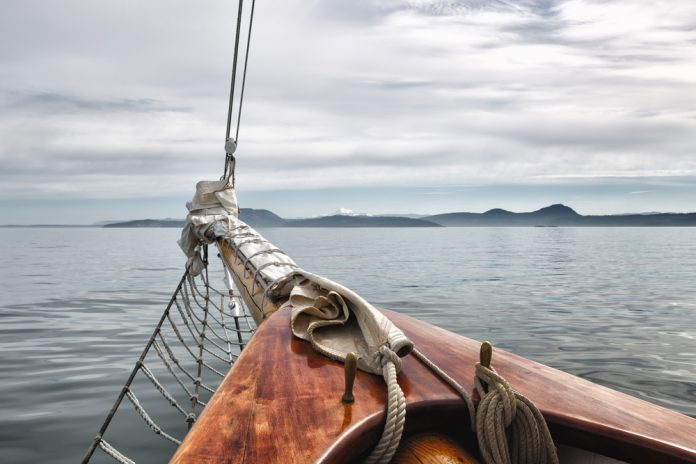
After 250 years of maritime mystery, Captain James Cook’s legendary HMS Endeavour has been discovered in Newport Harbor, Rhode Island, sparking a fierce dispute between archaeological groups over the validity of the landmark identification.
Key Takeaways
- The Australian National Maritime Museum has declared a shipwreck in Newport Harbor, Rhode Island to be Captain Cook’s HMS Endeavour after 25 years of research
- The ship, which was the first European vessel to land in eastern Australia and circumnavigate New Zealand, was later renamed Lord Sandwich and deliberately sunk by the British during the Revolutionary War
- Archaeological evidence includes timber measurements matching within millimeters of original plans, British wood analysis, and artifacts consistent with 18th-century origins
- The Rhode Island Marine Archaeology Project disputes the identification, creating controversy over the announcement’s timing and conclusiveness
- The wreck site is slated for enhanced protection due to its profound historical significance to multiple nations and indigenous peoples
A Historical Maritime Mystery Solved
After decades of searching, researchers from the Australian National Maritime Museum (ANMM) have confirmed that the remains of Captain James Cook’s legendary vessel HMS Endeavour rest in Newport Harbor, Rhode Island. The discovery ends a longstanding maritime mystery surrounding one of history’s most significant exploration vessels. This ship carried Cook on his famed 1768-1771 voyage, during which he became the first European to land in eastern Australia and circumnavigate New Zealand, fundamentally altering world history. The ship’s rediscovery brings a tangible connection to these pivotal historical events that helped shape the modern world and established British colonial presence throughout the Pacific.
“Researchers have confirmed that the 18th-century British explorer Captain James Cook’s lost ship found its final resting place in Rhode Island’s Newport Harbor, solving a decadeslong mystery, according to the Australian National Maritime Museum.” said Australian National Maritime Museum.
Compelling Archaeological Evidence
The ship’s identification rests on extensive archaeological research and precise measurements comparing the wreckage to historical plans. ANMM archaeologist Kieran Hosty emphasized the remarkable accuracy of the match, noting that timber measurements align “within millimeters” of Endeavour’s known specifications. The wreck site, designated RI 2394, features a linear stone ballast pile, exposed frame ends, four iron cannons, and remnants of the original structure. Wood analysis confirmed the British origin of the timbers, consistent with the Endeavour’s known repairs in 1776, while the absence of American timbers further supports the identification. These findings represent the culmination of 25 years of meticulous underwater investigation.
“The size of all the timber scantlings are almost identical to Endeavour, and I’m talking within millimeters – not inches, but millimeters,” declared Australian National Maritime Museum archaeologist Kieran Hosty. “The stem scarf is identical, absolutely identical.” said Kieran Hosty.
From Glory to Deliberate Destruction
The Endeavour’s remarkable journey from famed exploration vessel to sunken warship reflects the tumultuous history of the Revolutionary War period. After its celebrated voyages under Cook, the British Navy sold the vessel, which was renamed Lord Sandwich and later used as a prison ship during the American Revolution. In 1778, British forces deliberately sank the ship, along with four other vessels, to block French naval forces from entering Newport Harbor during the Battle of Rhode Island. This strategic decision transformed the once-proud symbol of exploration into a tactical obstacle, ironically preserving it for future generations through its submersion in the harbor sediments.
“proved beyond reasonable doubt that Lord Sandwich was one of five transports scuttled during the Battle of Rhode Island in an area immediately north of Goat Island.” said Dr. Nigel Erskine .
Archaeological Controversy
Despite the compelling evidence, the announcement has ignited controversy within the archaeological community. The Rhode Island Marine Archaeology Project (RIMAP), which collaborated on the research, has publicly disputed the ANMM’s definitive identification, suggesting that further investigation is needed before making such a historic claim. This disagreement highlights the tension between archaeological excitement and scientific caution when dealing with significant historical finds. The ANMM, while acknowledging RIMAP’s contributions, stands by its conclusion, citing the comprehensive nature of their research and the overwhelming physical evidence that confirms the wreck’s identity as the Endeavour.
“This final report is the culmination of 25 years of detailed and meticulous archaeological study on this important vessel,” said museum director Daryl Karp of the document, which he described as the “definitive statement” on the project. “It has involved underwater investigation in the US and extensive research in institutions across the globe.” said Daryl Karp .
Preserving a Multinational Heritage
The discovery carries profound significance for multiple nations and indigenous peoples across the globe. The Australian National Maritime Museum has emphasized the importance of securing the highest possible level of protection for the wreck site, given its historical and cultural importance to Australia, New Zealand, England, the United States, and First Nations peoples throughout the Pacific. Unlike many historic shipwrecks, the Endeavour contains few valuable artifacts, as anything of value would have been stripped before its deliberate sinking. However, its historical significance transcends material worth, representing a tangible link to explorations that reshaped the world’s understanding of geography and forever altered the destiny of numerous nations.
“Given Endeavour’s historical and cultural significance to Australia, Aotearoa New Zealand, England, the United States of America and First Nations peoples throughout the Pacific Ocean, positive identification of its shipwreck site requires securing the highest possible level of legislative and physical protection.” said Australian National Maritime Museum .














